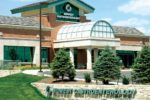Fortitude
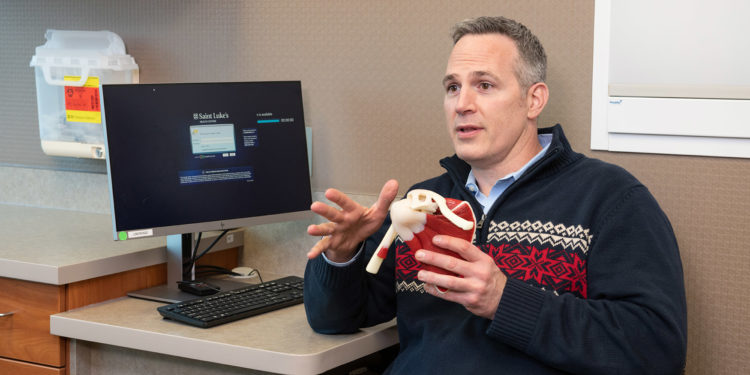
A Patient’s Journey with a Labral Tear by Jay Rapley, M.D.
Sponsored Content
“Dr. Rapley and the care team at Rockhill Orthopaedic Specialists have restored my faith in patient care. From the moment Dr. Rapley interacts with you as a patient, you can tell he genuinely cares about helping you get back to the activities you enjoy doing or need to be able to perform for your job. It is strange to say that being treated by Dr. Rapley was the most “positive experience” as a patient in my whole life. Knowing that Dr. Rapley was an athlete and the obstacles he has faced in his own recovery, meant that he could relate to my desire to restore function to my shoulder. He changes people’s lives for the better as he performs surgical procedures to correct defects that enable you to function again. I cannot say enough good things about this man.”
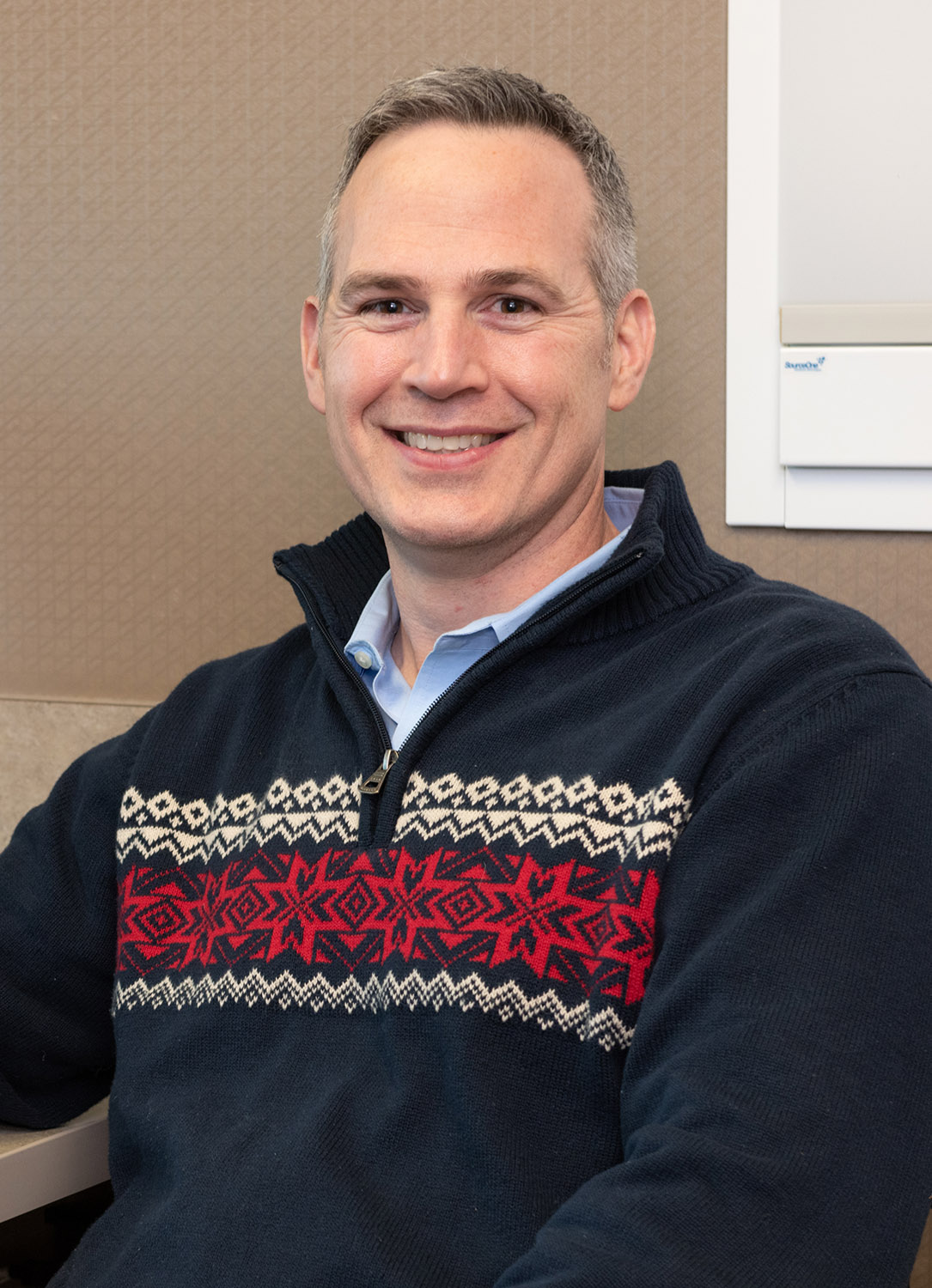
The Physician
Jay Rapley, M.D. is a board certified and fellowship trained orthopedic sports medicine surgeon. Dr. Rapley chose to become an orthopedic surgeon as it allowed him to enable his patients to resume the functions or activities that are reduced or limited following an injury or trauma. He is especially passionate about knees and shoulders because of the small details in each joint that aide in a patient’s improvement and outcome. Dr. Rapley takes pride in the tangible differences he can see and feel in each patient’s treatment and recovery.
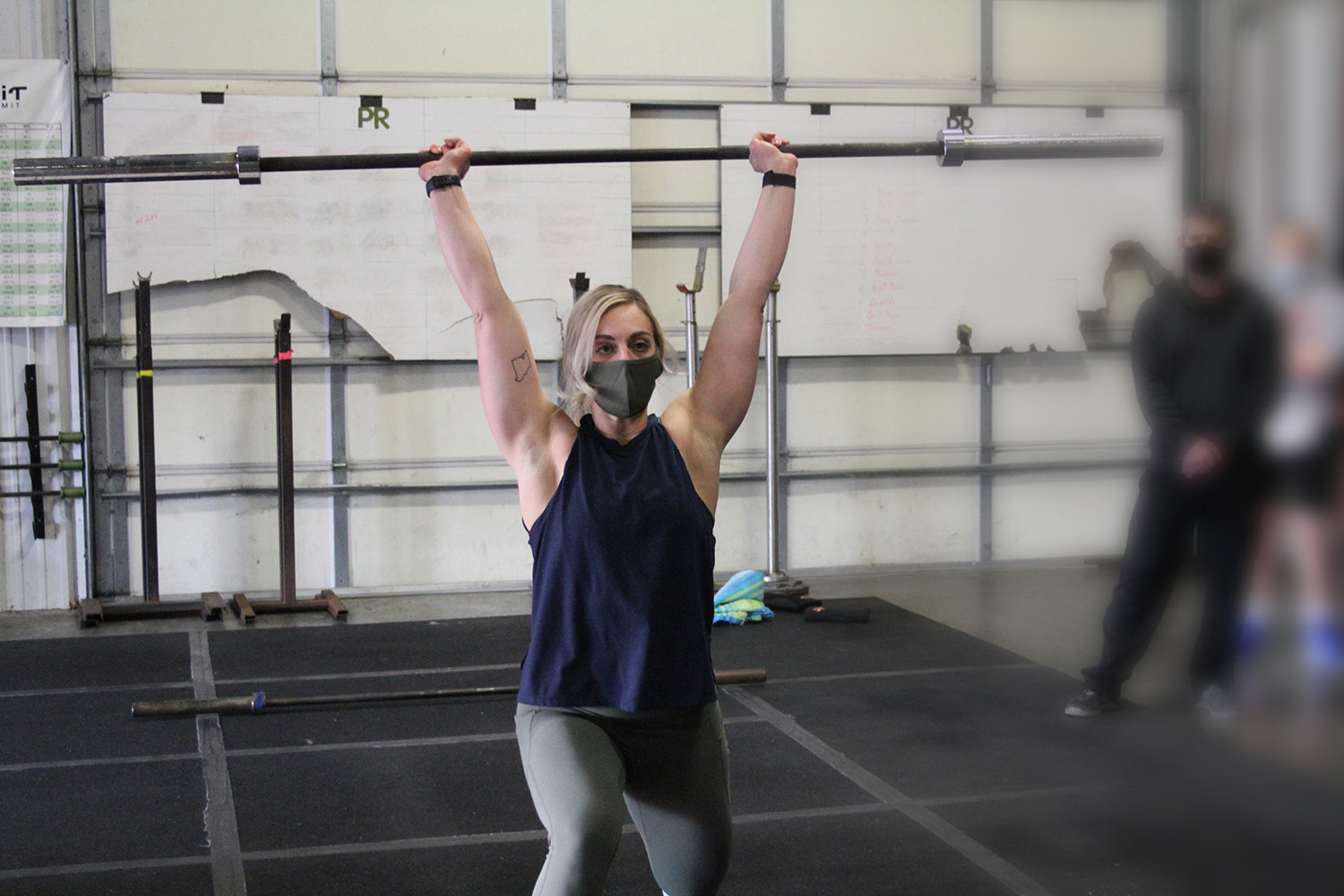
The Patient
Meet Lauren Weller, an athlete and local CrossFit coach who prides herself on being active. Lauren was referred to Dr. Rapley for persistent shoulder pain and increasing weakness, which caused her to limit her daily activities.
The Diagnosis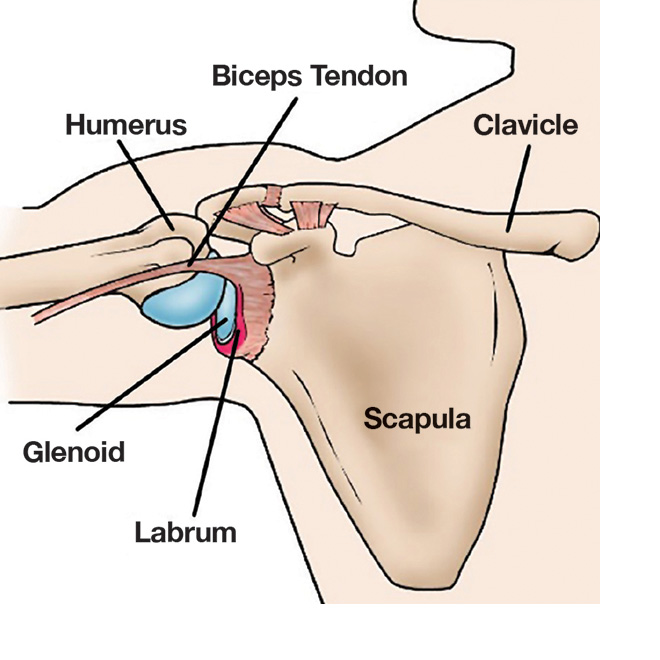
Lauren had an MRI which revealed a Paralabral cyst in the posterior superior margin of her glenoid with an associated superior labral tear. In addition, she had tendinosis of her supraspinatus tendon and marked AC joint arthrosis.
What does that mean in layman’s terms and how could this be fixed to help alleviate Lauren’s pain as well as help her regain motion and strength in her left shoulder?
Lauren had a cyst next to her labral tear, compressing the main nerve in her shoulder in the back of the glenoid. In addition, she had some degenerative changes of her rotator cuff and marked AC joint arthritis.
It is important to understand that the shoulder is a complex ‘ball and socket’ joint, wherein the head of your upper arm bone fits into a rounded socket, (glenoid) in your shoulder blade. Articular cartilage-a slippery tissue covers the surface of the ball and socket and helps create a smooth, frictionless surface that helps the bones glide across each other. The glenoid is surrounded by a strong fibrous cartilage called the labrum, which forms a gasket around the socket-glenoid to add stability and helps cushion the joint.
Surgical Approach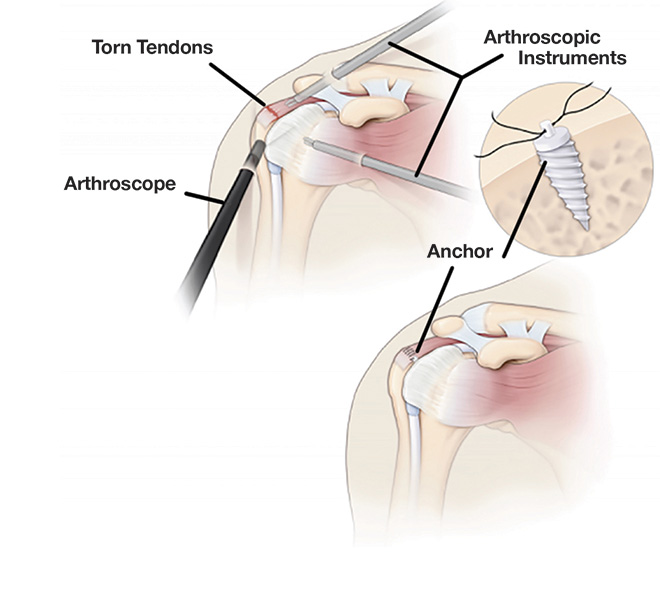
Dr. Rapley states that for patients who are high-level recreational or competitive athletes, or patients who have functional instability with activities of daily living, an arthroscopic repair can restore normal shoulder motion, improve pain, and optimally restore performance.
What is an arthroscopic procedure? A procedure used to inspect, diagnose, and treat problems inside a joint. Dr. Rapley explained that a small camera, called an arthroscope is inserted into the shoulder joint. That enables him to use these images to guide miniature surgical instruments, rather than having to make larger incisions required for an open procedure. He states that this approach results in less pain for his patients and shortens the time it takes for them to recover and return to their favorite activities.
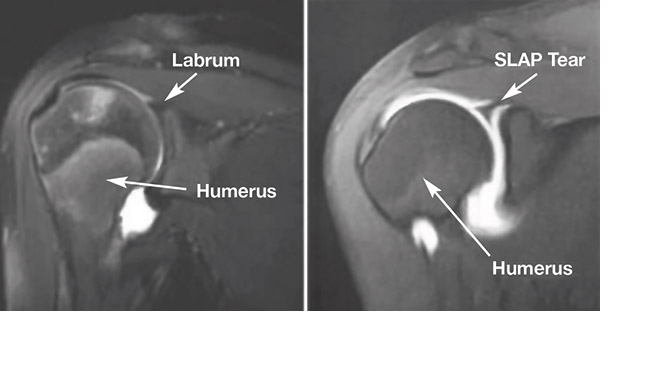
What is a SLAP Repair? A repair that occurs where the bicep tendon attaches at the top of the glenoid connecting the labrum – a ring of cartilage that surrounds the shoulder socket.
The surgeon drills a small hole into the glenoid bone where the labrum has torn away. A tiny anchor tied to a suture is implanted in the glenoid bone. Some tears may be repaired with just one anchor, others require multiple anchors. The surgeon ties the sutures around the torn labrum, reattaching it firmly to the glenoid. If the superior labrum cannot be repaired the tendon can be repaired to the upper part of the humerus.
Lauren had multiple labral tears that required multiple anchors to be placed in order to correct her superior labral tear, anterior labral tear, and posterior labral tear. In addition, she underwent a suprascapular nerve release, as well as distal clavicle excision.
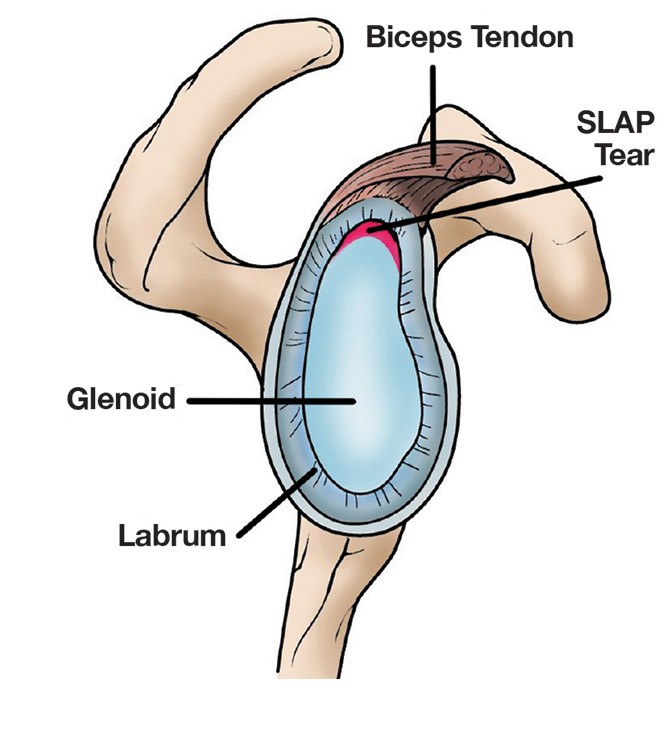
Arthroscopic SLAP repair is performed under general and regional anesthesia, in an outpatient surgical facility and patients usually go home the same day. Incisions are closed by utilizing steri-strips or small sutures to help alleviate scarring. Patients can expect to have some pain and discomfort for a few weeks following surgery. Ice will help relieve some pain and swelling.
Rehabilitation plays an important role in the healing and the restoration of function and strength, so a patient most likely will need to see a physical therapist and work on a custom crafted rehab plan for a few months. Patients need to understand the importance of working hard during the rehabilitation phase of their overall treatment plan.
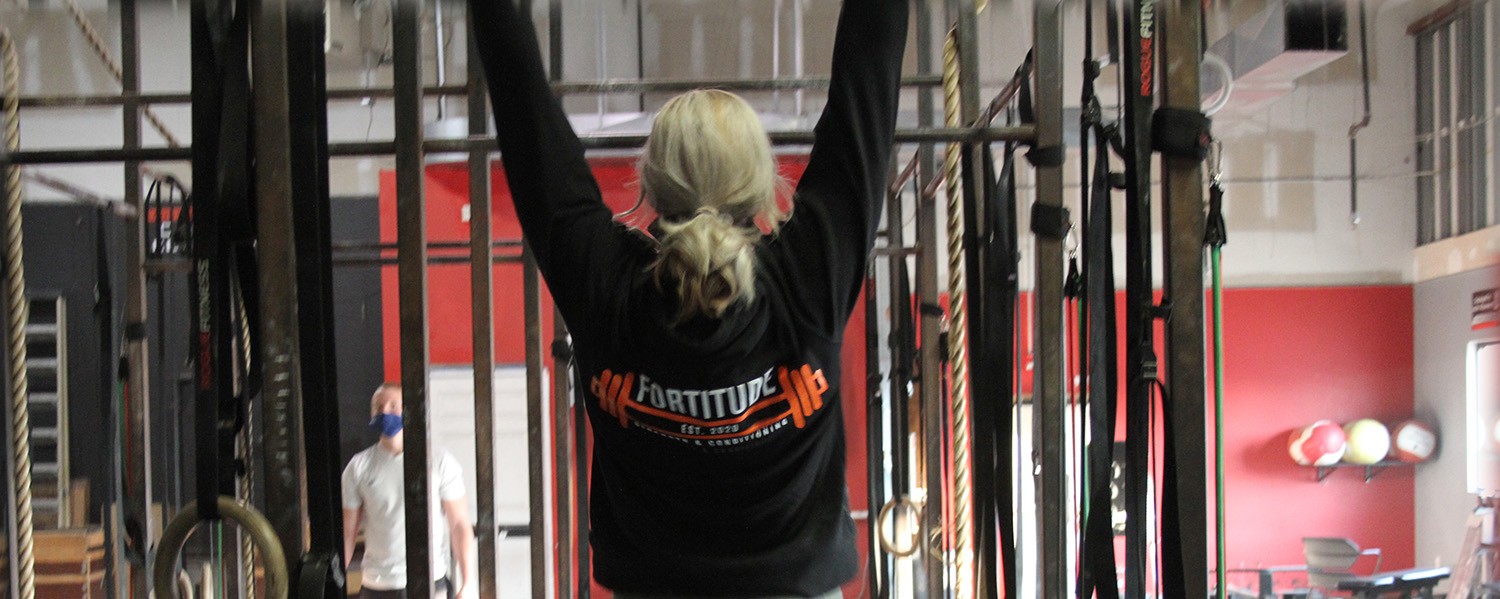
Healed and Helping Others
Lauren believes in Fortitude-(strong will in the face of danger or pain), in fact it is the name of her fitness gym. She appreciates the relevance of the fortitude that Dr. Rapley lives each day of his life after his accident and how he continually inspires others to more actively participate in their own recovery process. Lauren states that she was able to coach her clients two week’s post-op with her arm in a sling and at less than 3 months out she was able to do handstand holds and at 15 months’ post-surgery, she is able to lift weights, perform muscle ups, and walk on her hands.
She states that Dr. Rapley changes people’s lives for the better as he helps restore function, not just with the surgical procedure, but by actively listening and keeping patients informed about how they are progressing and encourages them to remain positive while doing their rehabilitation.
Lauren’s story illustrates the importance of what is missing in healthcare today, as striving to deliver an excellent patient experience day-in and day-out is essential for success. Gaining and understanding the patient’s perspective, requires active listening — obtaining patient feedback and goals in structured conversations and incorporating knowledge gained into constant and consequential improvements in the factors that mean the most to patients.
Simply put, Dr. Rapley listened to Lauren’s goal of being physically active as well as being able to return to her occupation as a fitness coach. Having the correct diagnosis and surgical procedure in conjunction with a motivated patient leads to the best possible surgical outcomes.

If you are experiencing shoulder pain, please call Rockhill Orthopaedic Specialists at
(816) 246-4302 to schedule a consultation with Dr. Jay Rapley or visit rockhillortho.com



